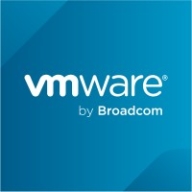

VMWare Tanzu CloudHealth and Red Hat CloudForms compete in the cloud management sector. VMWare Tanzu CloudHealth has an edge in pricing and support clarity, whereas Red Hat CloudForms stands out for its rich feature set.
Features: VMWare Tanzu CloudHealth provides robust cost management, optimization tools, and integration capabilities for businesses focusing on financial oversight. Red Hat CloudForms offers automation, policy-driven governance, and extensive customization options, appealing to enterprises managing complex cloud environments.
Room for Improvement: VMWare Tanzu CloudHealth could enhance feature depth, improve customization options, and refine the automation tools. Red Hat CloudForms may benefit from simplifying deployment processes, improving user interface intuitiveness, and reducing the initial learning curve.
Ease of Deployment and Customer Service: VMWare Tanzu CloudHealth offers a streamlined deployment model easily integrated into existing infrastructures with efficient customer service. Red Hat CloudForms, while powerful, requires a complex setup, needing additional expertise but offers robust support once deployed.
Pricing and ROI: VMWare Tanzu CloudHealth generally has a lower initial setup cost, suiting budget-conscious organizations aiming for rapid ROI. Red Hat CloudForms involves a higher upfront investment yet provides long-term benefits and flexibility, justifying costs for enterprises requiring comprehensive cloud management.
| Product | Market Share (%) |
|---|---|
| VMWare Tanzu CloudHealth | 1.9% |
| Red Hat CloudForms | 1.5% |
| Other | 96.6% |


| Company Size | Count |
|---|---|
| Small Business | 4 |
| Large Enterprise | 7 |
| Company Size | Count |
|---|---|
| Small Business | 4 |
| Midsize Enterprise | 2 |
| Large Enterprise | 4 |
Manage container, virtual, private, and public cloud infrastructures
Managing a complex, hybrid IT environment can require multiple management tools, redundant policy implementations, and extra staff to handle the operations. Red Hat® CloudForms simplifies IT, providing unified management and operations in a hybrid environment.
As your IT infrastructure progresses from traditional virtualization toward an Infrastructure-as-a-Service (IaaS) model, CloudForms evolves, protecting your investments and providing consistent user experience and functionality.
VMware Tanzu CloudHealth, formerly known as VMware Aria Cost Powered by CloudHealth, is a specialized cloud management platform tailored for Multi-Cloud Cost Optimization. It offers comprehensive visibility into cloud spending across various providers, enabling users to identify areas for optimization and make informed resource allocation decisions. With features like reserved instance management, resource rightsizing, and automated cost governance policies, it facilitates financial management for optimal cost efficiency. Beyond cost optimization, Tanzu CloudHealth enhances cloud operations through workload optimization and governance automation, catering to multi-cloud environments encompassing public, private, and hybrid clouds. Its primary focus remains on enabling organizations to effectively manage and reduce cloud expenditures while supporting operations across diverse cloud platforms.
We monitor all Cloud Management reviews to prevent fraudulent reviews and keep review quality high. We do not post reviews by company employees or direct competitors. We validate each review for authenticity via cross-reference with LinkedIn, and personal follow-up with the reviewer when necessary.